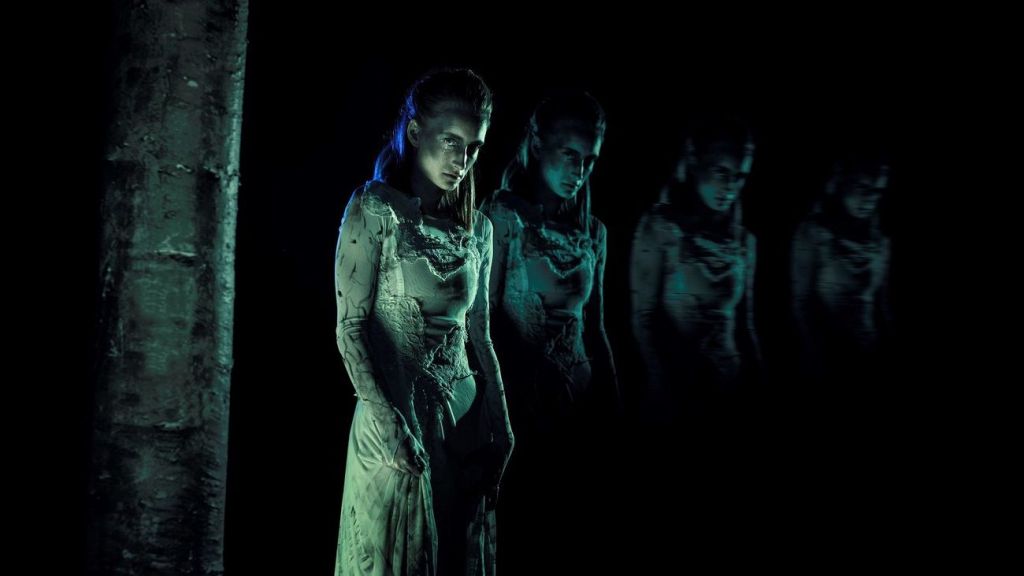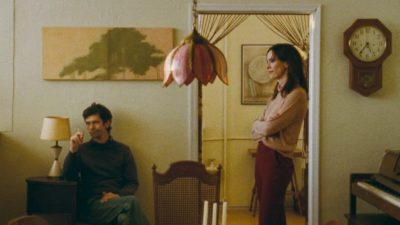Giselle, a romantic ballet, has been played constantly on the stages of the world for 180 years already. The subject is timeless: a girl, who goes mad and dies from disappointment in love and gets in the afterworld, saves her significant other from the revenge of the Wilis, the spirits of maidens who died after being betrayed by their lovers. László Velekei, director of the Győr Ballet Company, has rethought the story of Giselle, as an extraordinary challenge: he had to write choreography to a newly composed music written by Félix Lajkó. The premiere will be on 13 May, 7 pm, as part of the Bartók Spring International Art Weeks. I asked László Velekei about this show titled GisL.
You can join the virtual theatre of the Bartók Spring for free.
We can be used to the fact that the Győr Ballet Company always brings something contemporary into the performance of classical works. How should one work with this piece in the 21st century?

This is the greatest romantic ballet, and I don’t think there is any influential dance troupe that wouldn’t play it in any form. With former director of Győr Ballet Company, János Kiss, we were sure about rethinking it. But not re-forming the whole piece, we rather put a kind of layer on it, with an update on the language of dance, and in accordance with our rapid world, we made it faster and thicker. I have a human-centred artistic attitude, and I liked very much that we, like in the original, put the female protagonist in the focus. My repertoire has a red line of female protagonists. An important part of my ars poetica is that our emotions make us evolve as humans, and Giselle also steps over herself to be able to love. She brings the pain of the loss of her love to the extremes, until the point that she goes mad and then dies. And then she is still able to overcome this. What I’m looking for in every single piece are humans who can overstep their boundaries.
The original music of Giselle is a solid support for choreographers and dancers. What challenges does it bring to work with a completely new music?
It was a huge honour to work with Félix Lajkó. We really started to work on this piece from the basics. The first time he visited the Győr Ballet Company, we had our Anna Karenina performance on programme. Before that he said that he looked at the trailer and is not sure about the ambient music. I like, for instance, Max Richter’s music, because it gives a very free hand to movements, and we can find the emotional dramaturgy in the musical one. And when we started to discuss in the office during the break of the show, Félix enthusiastically took his violin out. He played a tune and called it the eventual main motive in Giselle. It was so lovely, I was totally enchanted. And he kept this basic inspiration for the whole artistic process.
How did the joint work continue?
A few weeks later, we met in the studio. They started to record the music and I was daydreaming about the choreography. It was an incredible experience to work with them. To be honest, I had a completely different idea of the Giselle at first, and I’m very happy that an artist could have such an impact on me, so that I could even take a 180-degree turn. His characteristic, beautiful music provided the basis for a new Giselle.
Was it hard to let the original music go in your mind?
My professionalism teaches me to be open-minded and humble, so that I know that if something inspires, then it’s never an accident. The key to art is the inspiration which is a heavenly, divine wonder when it happens. Like opening an empty exercise book and writing constantly, without lifting the pen. This was the inspiration I got from Félix Lajkó and the dancers of the Győr Ballet Company. I can say THANK YOU, with all capital letters, because this was a wonderful phase in my life, and I can’t wait to see how the audience reacts, what they will say, so that the play will be completely fulfilled.
What type of music is this?
It’s very hard to say. It is partly character music, with a slight breeze of klezmer. Félix Lajkó is a true world musician, because any time I listen to him, it’s like a journey. Like getting a glimpse of the music of all kinds of people, but it also includes the Hungarian tradition, a true Hungarianness.
The original music is also like that, it operates with German folk culture.
Yes, especially at the character dances. It wasn’t easy to choreograph. I like when I can be an equal partner of the musical notes in the world of movement. As many notes are on the sheet, as many movements should be there. The dancer should have as many body parts to be on the move, so that the music completely pervades their body.
Some of the important parts of Giselle are considered to be among the biggest challenges in ballet repertoire, and there are many pantomime elements too, with a huge emphasis on acting. Did you want to keep these things?
Yes, I love ballets with a plot and I’m not afraid of it being a more conservative form of dance theatre. I feel that it has a reason to exist. Dancers of Győr Ballet Company are very colourful personalities, so I have room to choose a repertoire to see what would fit whom. Eszter Adria Herkovics has been with us for almost three years and she is a very talented, sensitive and strong dancer. I knew from the start that she will dance the title character. At a ballet with a plot, the audience is led through the piece, we hold hands while on a rollercoaster, the drama, the love, the madness, the loss. A ballet with a plot is good if everyone feels the same at the same moment, if thoughts remain with the audience, and they perhaps return to rewatch the piece another time. It is crucial for me because the art of the Győr Ballet Company is a complete unification with the audience, and a plot provides some help for that, too.

How did you experience the pandemic and how do you plan to return?
It was very difficult, because a member of the troupe got infected. We could deal with the situation with communication, discipline, and awareness of our vocation. It was a worse feeling that we got detached from the audience, but we found opportunities in the hard times, too. We tried to develop our online presence, marketing, and we renewed our social media sites. We were working on content in advance, so we are actually ready with the repertoire for the season 2021/2022. We are so much looking forward to meeting the audience in person again!
Interview: Anna Rácz
Translation: Zsófia Hacsek

























Comments
1 Responses to “I got so much from Félix Lajkó and the Győr Ballet Company – László Velekei on their newest production”